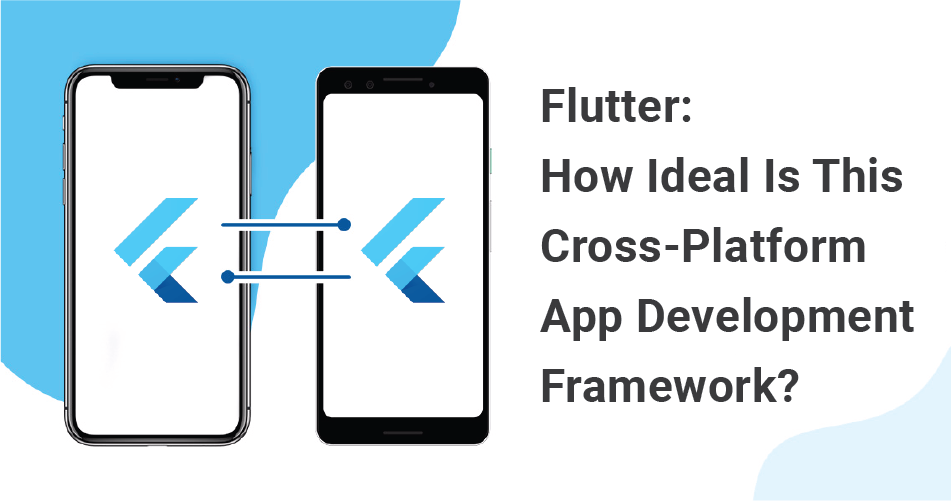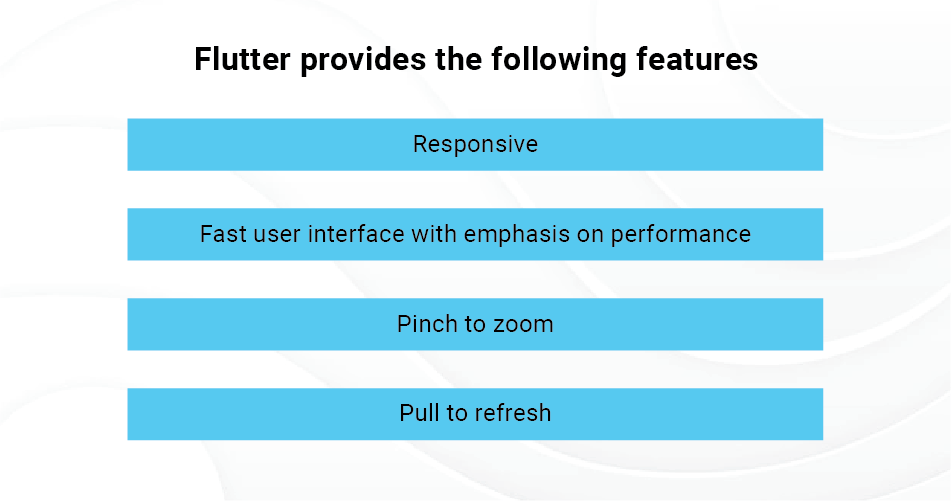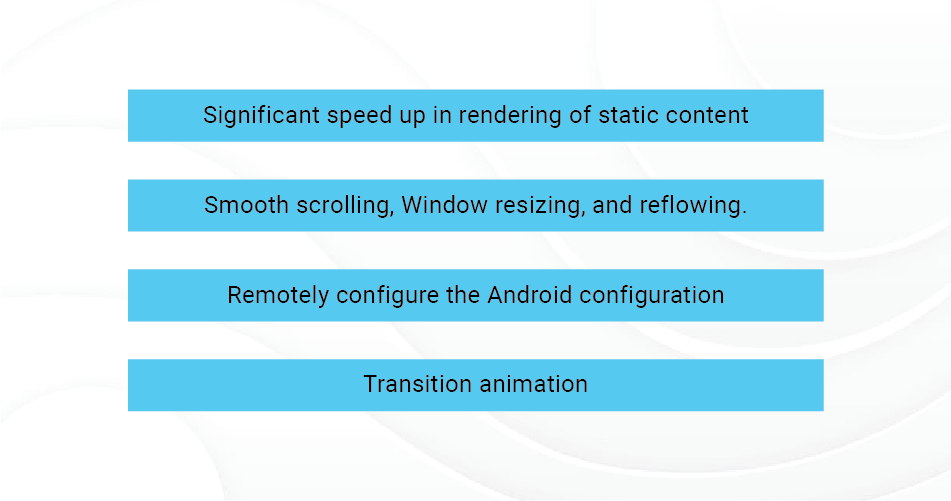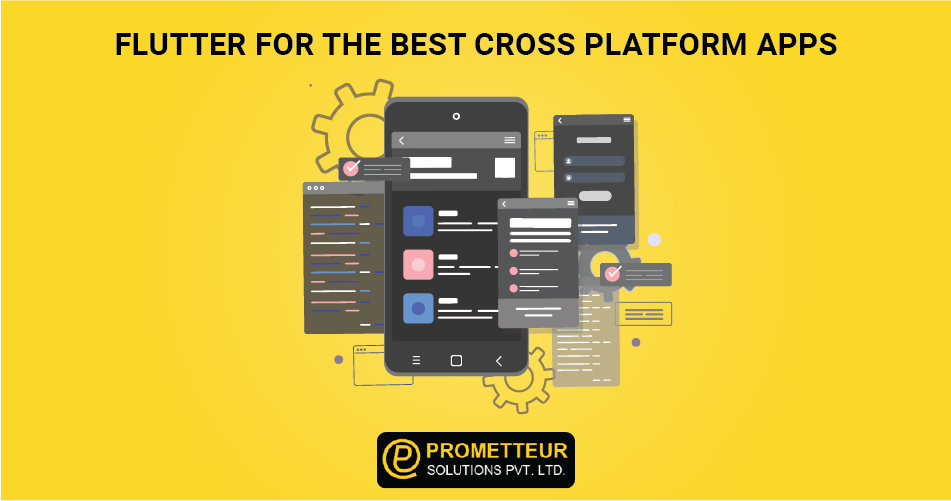
The two most popular platforms for mobile app development are iOS and Android. For application development, each of these platforms requires distinct sorts of code. Various flutter app development firms have found that separate code is an issue, which has led to the usage of multi-platform development frameworks like Flutter.
The finest cross-platform app development entails the building of mobile apps that can operate on a variety of systems. Programming is done only once in this sort of development to ensure that the software is compatible with Android, iOS, and Windows. Cross-platform development has grown in popularity as a result of its developer-friendly features and tools.
What is Flutter?
The goal of this cross-platform development framework is to solve the problem of the separation of mobile platforms. The key component of this framework is the Dart language. Dart is a dynamic, object-oriented, and functional programming language, which lets developers write more concise code. Flutter uses Dart as the core language of a mobile app development framework.
One of the advantages of using a cross-platform framework like Flutter is that an application is developed to be appropriate for every type of mobile device. An app development company can create a cross-platform app on Android, iOS, and Windows platforms using the same code for an app. Cross-platform means the app developers don’t need to rewrite their app once it is developed on each of the major platforms; the code works the same way on all these platforms.
Another thing that should be mentioned is that while cross-platform apps look and function the same on all mobile devices, the benefits are different between Android and iOS. This is the reason for the use of cross-platform development.
Flutter provides the following features:
- Responsive
- Fast user interface with emphasis on performance.
- Pinch to zoom.
- Pull to refresh.
- Significant speed up in rendering of static content.
- Smooth scrolling,
- Window resizing, and reflowing.
- Remotely configure the Android configuration.
- Transition animation.

Responsive
Flutter app development companies make a lot of effort to provide optimized apps that can work efficiently and effectively on any mobile device. The main target group of this type of app is iPhone and Android phone users. The interactive and responsive design feature of Flutter makes the framework very unique.
With Flutter, a user has a variety of mobile apps on their phones such as smartphone apps, tablet apps, smartwatch apps, and wearable devices. The improvement in the cross-platform app development framework has made the user have one app for all.
Fast user interface with an emphasis on performance
Flutter helps developers build cross-platform mobile apps using its unique APIs and features like reduced view sizing, on-demand, plug-in agnostic reactive mode. Flutter was developed in order to give developers a great flutter app development framework with pre-built, app UI components that offer high performance, are easy to use and are highly optimized.
One of the most notable features of Flutter is its widget system. Flutter focuses on lightweight, low-overhead, easily usable widgets. Flutter is built on top of Dart, which is a high-level programming language. This framework has a Dart script compiler and a Dart VM for cross-platform apps.
Flutter cross-platform apps are faster than Android and iOS apps. This cross-platform framework uses a dual multi-platform architecture to create the Flutter app. This framework uses two major building blocks.
Pinch to Zoom
Pinching to zoom is a very common gesture on screens nowadays. It’s used on smartphones, tablets, laptops, and also smart screens. It is possible to pinch with two fingers or one finger. When you are zooming in with touchscreens, the digital objects are enlarged as you are zooming in.
The pinch-to-zoom gesture was invented by Apple’s Steve Jobs in 1988 for the original Apple Macintosh computer, where it was called “expand”. This function has been around for a long time and has become something that we associate with touchscreens today. Flutter allows mobile app developers to explore this feature for excellent user experience, especially for iOS devices.
Flutter Pull to refresh feature
The Flutter Pull to refresh feature is the new way of refreshing that comes with the latest version of Google’s app. Developers have created this new interface for a more user-friendly experience.
Users can now see new content without having to scroll through their feed, read each post, or open links in a separate window. It is simpler and more efficient than scrolling through your feed manually or tapping on an individual post to view it on full screen.
Smooth Scrolling
An on-screen keyboard and UI controls with a wide range of platforms have made using Flutter a lot easier. It brings back to you the delight of classic UI app development. Flutter is a mobile UI toolkit for building high-quality native interfaces on iOS and Android in record time. Flutter’s engineers have created the Flutter Smooth Scrolling Feature to help developers create smooth scrolling experiences for their users.

Unlike other scrolling libraries, the Flutter app development has a Smooth Scrolling Feature that is not reliant on adding custom scroll indicators or scrollable overflow areas to your layout. This reduces the friction of developing with Flutter, as it will handle all of this for you, and set up correctly out of the box.
The library is built on native platform primitives that are tuned to achieve a butter-smooth 60fps scrolling experience. It is also optimized to be lightweight and flexible enough that you can customize it however you want without any tradeoffs in performance or power.
Flutter Significant speed up in rendering of static content
With the Flutter framework, a significant speedup in the rendering of static content is possible. It will allow designers to quickly iterate on static designs and it can improve visual fidelity for parts of the UI that don’t change frequently.
Flutter Window resizing, and reflowing feature
The Flutter Window resizing and reflow feature is one of the most wanted features by the Android community. It was originally introduced in iOS 8. Though it has been around for a while, Android does not have it yet. The current Android Studio only allows for this function to be completed through code instead of having an option under the layout editor.
Remotely configure the Android configuration feature
The Flutter Remotely configured Android configuration feature is designed to make it easy for you to remotely configure an Android device with a configuration profile, and then automatically install and launch the profile’s app. Configuration profiles are typically used for enterprise devices, where they can be deployed in a large number of configurations on a single device type.
A typical use case is when a company wants its employees to have access to some apps that are not available on Google Play, such as enterprise-specific apps or apps that need more security settings than what’s available on Google Play.
Animation Transition
Flutter is a mobile app SDK for designing your own high-quality, high-performing apps and customizing them across all of the most popular devices. You can use it to build robust and beautiful animated interfaces.
Flutter app development provides a transition animation that lets you smoothly animate any property from one value to another. You can use this feature to create an effective animation that changes multiple properties at once. This makes it possible for developers to animate the following: opacity, width, height, transform-origin and transform scale. The transitions also work with circle and ellipse widgets as well as images so you can animate any property.
Why is Flutter beneficial for mobile app development?
Flutter is very similar to traditional mobile development such as Java and C++. Flutter helps to develop apps for multiple mobile platforms. The primary purpose is to develop a complete user experience, which allows apps to become interactive. Using this framework, it is possible to create experiences that are rich and fun for users.
Flutter was developed by Google. Flutter app development is created to be able to be developed on multiple mobile platforms such as iOS, Android, and Windows Phone.
Flutter allows you to create apps that use shared libraries, as well as use existing widgets on the existing platforms. This makes the Flutter app development process a lot easier. Also, the code is open-source, which ensures the code quality.
What is the Future of Flutter?
Flutter is an open-source cross-platform tool for app development. This has been designed by Google in order to ease the existing complexity in application development. Flutter has a very unique interface. When you want to create your app, it automatically simulates Android, iOS, devices. This makes the flutter app development process more seamless, convenient, and secure.
Is Flutter suitable for all apps?
Flutter is suitable for all types of apps. It is easy to use and extremely efficient when compared to Flutter Native Framework. Primarily, Flutter is a mobile app SDK that helps developers build high-quality native apps for both Android and iOS.
Flutter is a completely cross-platform framework, and, with its help of it, developers could develop mobile apps for Android and iOS.
Flutter development provides all the necessary tools like Android and iOS frameworks that aid in the development of apps. From scratch to the device experience and store integrations, Flutter provides all the required tools. Flutter helps developers to build the user experience on mobile devices.
Flutter will ease the mobile app development process because it offers the most engaging user experience. It is designed to leverage high-performance libraries like NativeScript, Dart, .NET, React Native, etc. Also, developers will be able to build code with the best tools like Node.js, Electron, Mocha, Chai, Karma, and Karma Karma.
Flutter for Cross Platform mobile app development
Flutter is a cross-platform mobile app development framework for Android and iOS. It is open source. Flutter helps developers to develop and maintain cross-platform apps that can be launched from both Android and iOS.
Developers can target any device with either the Flutter framework or any other SDK. For developers who want to run on both Android and iOS, Flutter can help. The cross-platform nature of Flutter helps developers to reuse app code. When they run the same Flutter app on both platforms, the same features and functionalities are available. This makes the app more secure and stable. In terms of Android and iOS development, a cross-platform app development framework is more beneficial.
Conclusion
Let us know what you think about the Flutter: Is it the new cross-platform application development framework? What are the advantages of Flutter? Does it provide the best advantages of a cross-platform app development framework?
With more and more world-class companies entering mobile app development, it is difficult for mobile app development companies to select a perfect mobile app development platform. Flutter app development has been the most innovative cross-platform mobile application development framework developed by Google. It is developing its own platform and it is open source for developing multiple mobile apps and it is free.
